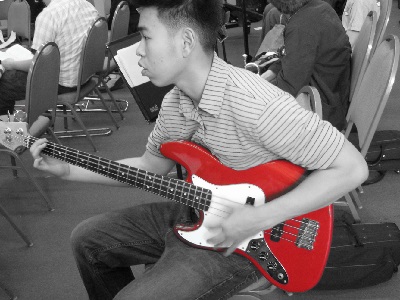Recommended Types of Guitar For Kids
 Trying to find a musical instrument for your child can be hard. Not only do size and weight factor into your purchase, but appeal plays a large role as well. Children tend to pay more attention to aesthetics than adults. They tend to be pickier, and also needier.
Trying to find a musical instrument for your child can be hard. Not only do size and weight factor into your purchase, but appeal plays a large role as well. Children tend to pay more attention to aesthetics than adults. They tend to be pickier, and also needier.
So how can you get your child into guitar?
In this article, we will discuss different types of guitars for kids.
The First Type Is A Standard Electric Guitar
Using a standard electric guitar will depend on your child’s size and age. If you have an older child (ten to twelve) you may be able to get away with a full sized guitar. If not, you will need a miniature guitar.
Electric guitars are a great way to get started if you have an amplifier readily available. They can be used for any style, from blues to rock and roll, jazz, and anything in between. They are easy to maintain and take care of. And most of all, children guitar lessons on electric guitar are easy to come by.
If you choose to use an electric guitar for your child, you will need to think about a few things. First, as mentioned before, do you have a practice amplifier (10 watts)? If not, your child may grow bored of the guitar as they won’t be able to hear it very well.
Although it may give you headaches for a while to hear all of the noise, remember that we were all young once, and the greatest part of anything is the discovery. Don’t take away any element of it simply because you want a bit more quiet. Set a volume limit and make sure your child adheres to it, but don’t take away the option of an amplifier altogether.
Children’s fingers are a lot more delicate than our own. Keep this in mind, as they will need picks and lighter gauge strings. If you find that they tend to break the lower strings, try a thicker bottomed set.
The Second Type Of Guitar Is The Acoustic Guitar
Acoustic guitars are great as they don’t require amplifiers or much maintenance at all. The downside is that kids tend to be forgetful and sometimes careless, and acoustic guitars tend to be fragile. If they are left on the floor or under a blanket, they could get sat on or stepped on.
Unlike an electric guitar, there is no recovery from it. Another problem is that there is no volume control with an acoustic guitar. This means that you will have to deal with higher volumes of noise at all times.
The choice of using an acoustic guitar should come down to your individual child. If your child tends to display a level of maturity, an acoustic guitar may very well be a great option. Acoustic guitars are a bit more limited when it comes to musical style choices, and the strings tend to be a lot harder to fret for weaker fingers.
Those are the two main types of guitar for kids. Make your choice based on your child’s needs and behaviors. You’ll know what’s best.
Are You Looking For Great Guitar Lessons For Children?
The Learn And Master Guitar Homeschool course contains step-by-step lessons designed to teach children how to play the guitar. With a carefully designed 2-year curriculum, this course is perfect for parents who want to homeschool their kids even if you don’t know how to play the guitar.







Leave A Comment